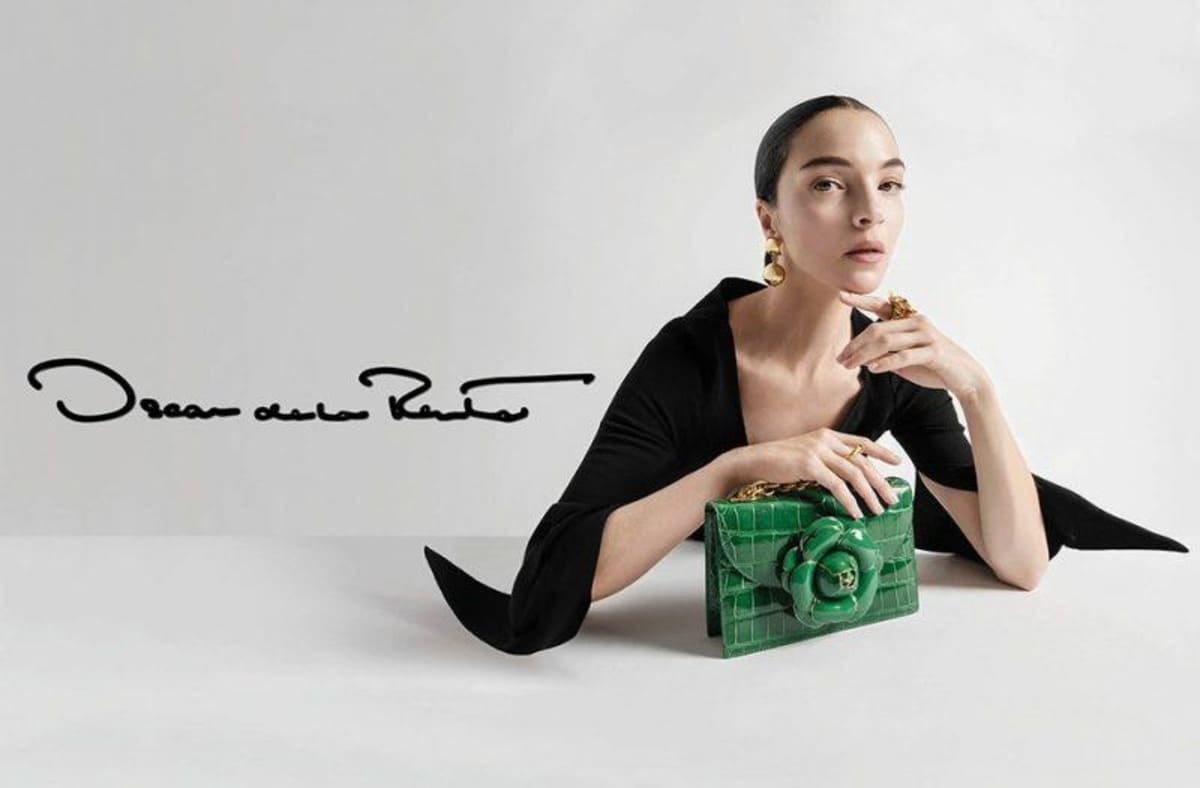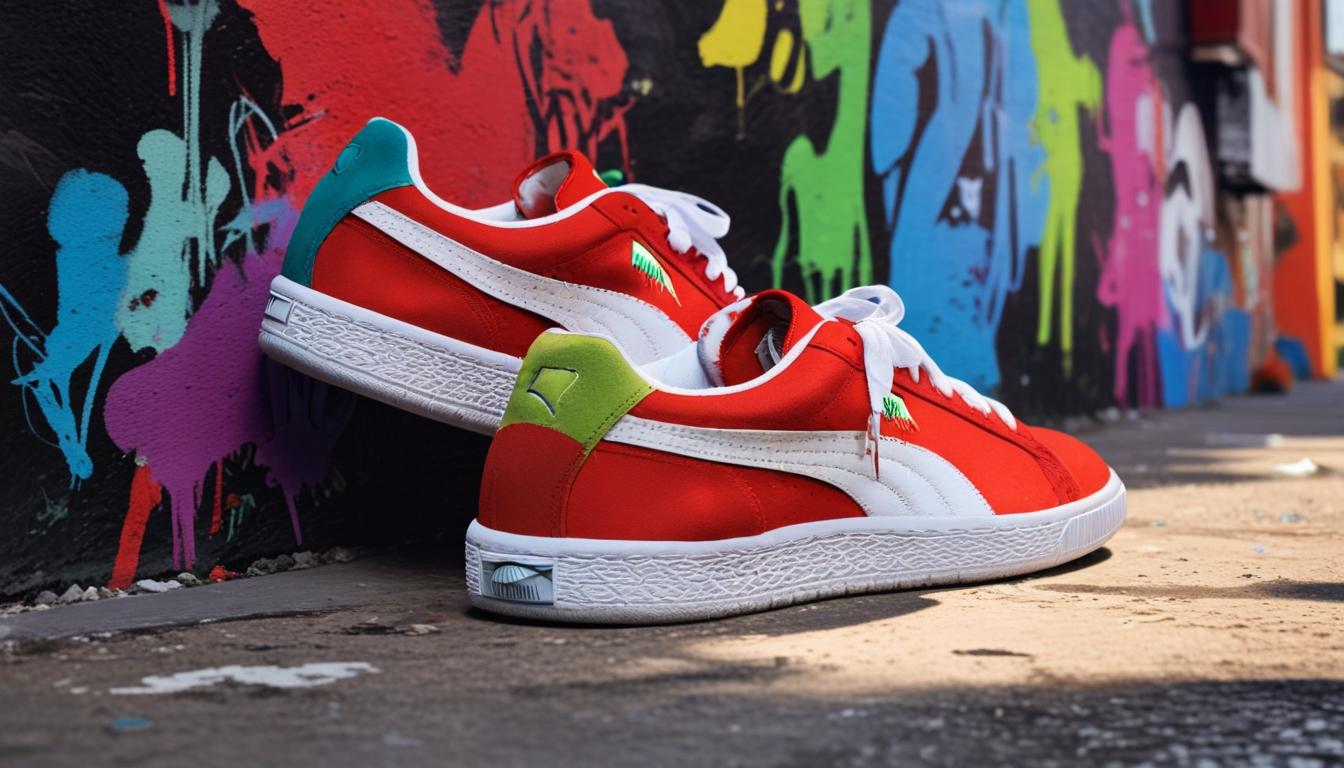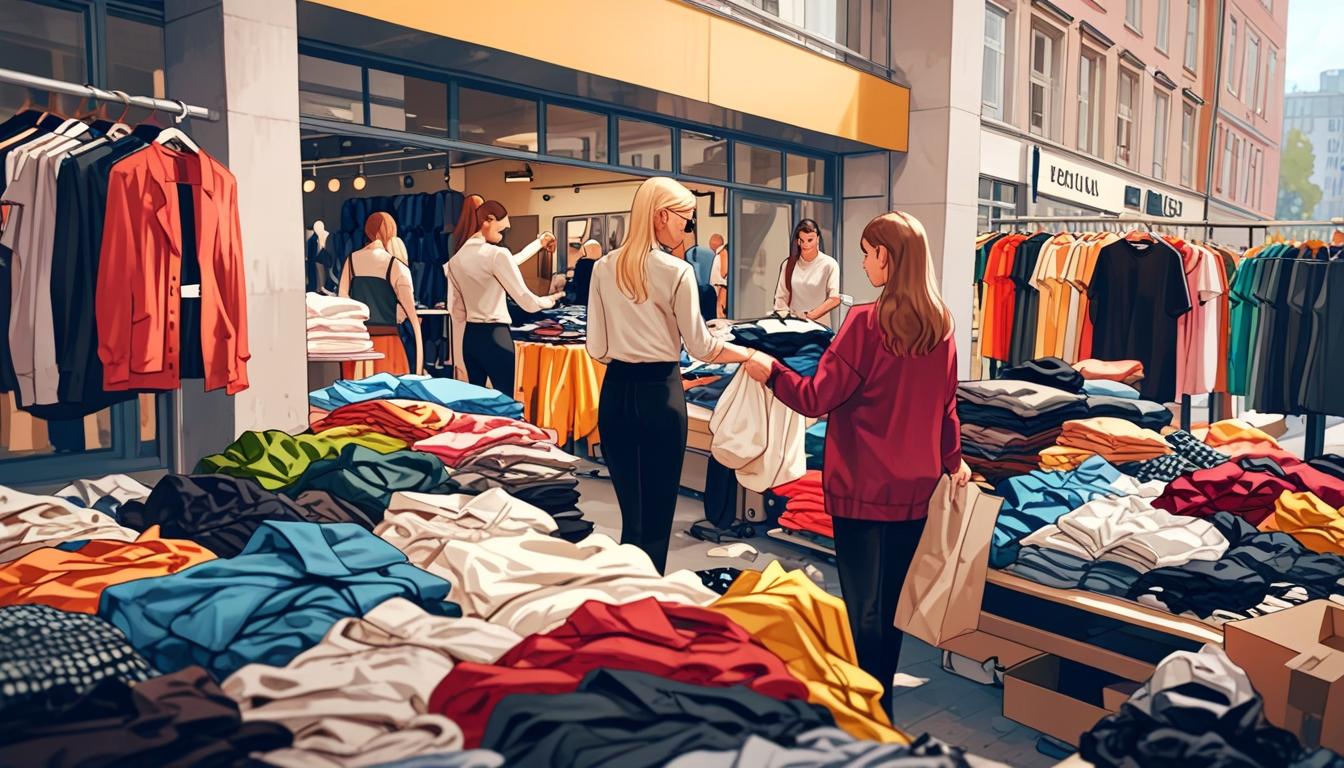When you think about *Fosse/Verdon*, the stunning outfits likely come to mind, showcasing a unique blend of 1960s and 70s fashion. You've got Gwen Verdon's vibrant jumpsuits and Bob Fosse's sleek silhouettes that perfectly encapsulate their characters and the era's spirit. Each piece is more than just fabric; it tells a story of ambition, artistry, and cultural change. But what challenges did costume designer Melissa Toth face in bringing these iconic looks to life? Understanding that could reshape how you view these costumes and their role in the series.
Overview of Fosse/Verdon
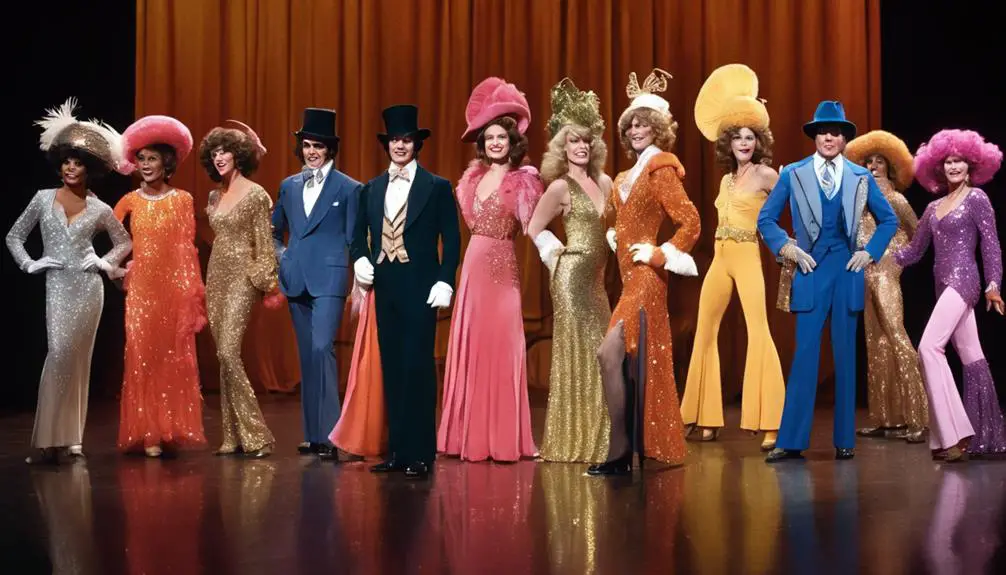
*Fosse/Verdon* is an enthralling miniseries that explores the intricate dynamics between legendary choreographer Bob Fosse and his muse, Gwen Verdon. Premiering on FX in April 2019, this eight-episode series dives deep into their complex relationship, showing how love, ambition, and creativity intertwined over five decades. You can't help but get drawn into their world, filled with passion and artistry.
Bob Fosse, portrayed by Sam Rockwell, was a groundbreaking choreographer whose innovative style changed Broadway forever. Meanwhile, Gwen Verdon, played by the incredible Michelle Williams, wasn't just his partner; she was his inspiration and a star in her own right. Together, they created unforgettable performances that left audiences buzzing.
The show captures the highs and lows of their partnership, shedding light on the sacrifices they made for their art. You might find yourself rooting for them one moment, then feeling the weight of their struggles the next. It's a rollercoaster ride of emotions!
Critics raved about the storytelling and the performances, especially Williams, who snagged multiple award nominations. As you watch, you'll notice how the costumes play a crucial role in highlighting their unique styles. The costumes not only reflect the characters' personalities but also enhance the overall narrative.
In short, *Fosse/Verdon* is a must-watch for anyone who loves theater, dance, or just a good story about two larger-than-life figures who shaped the entertainment world.
Iconic Costumes of Gwen Verdon
Gwen Verdon's costumes in *Fosse/Verdon* pop with vibrant colors and intricate designs, perfectly mirroring her dynamic personality and the fashion evolution of the 1960s and 70s. You can't help but admire how each piece captures the spirit of Broadway while also highlighting Gwen's influence on the stage. The costume design team, led by the talented Melissa Toth, went all out to recreate Verdon's iconic looks. Isn't it amazing how they sourced vintage fabrics and accessories? They really nailed the authenticity!
One standout piece is the fabulous green hostess jumpsuit. It wasn't just stylish; it allowed for unrestricted movement, making it ideal for her energetic performances. I mean, who wouldn't want to dance freely in something that looks that good? Complementing these costumes were essential accessories, like the dazzling gold necklace and jet drop earrings, which added that touch of glam we all love.
Each outfit tells a story, reflecting not just Verdon's personality but also the changing fashion landscape and the women's liberation movement. It's fascinating how clothing can symbolize so much! When you watch the show, you can feel the effort that went into every detail. The costumes are more than just fabric; they're a celebration of Gwen Verdon's legacy. So, next time you catch *Fosse/Verdon*, pay close attention to the costumes—they're a big part of the magic!
Bob Fosse's Signature Style
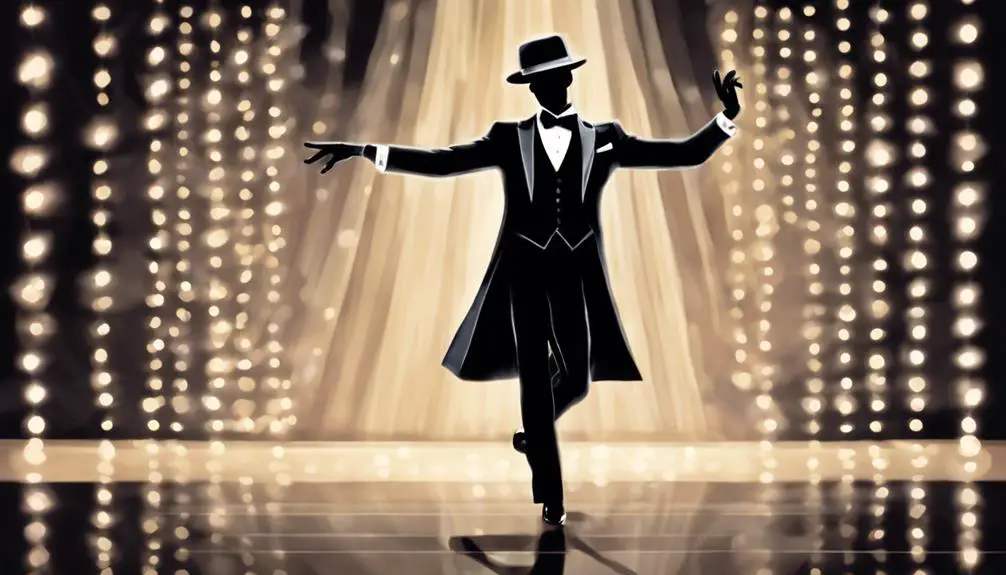
When you think about Bob Fosse's signature style, what comes to mind? His body-conscious outfits and that iconic grey fedora are hard to miss! It's fascinating how his unique accessories and tailored details not only defined his personal look but also influenced fashion today—who knew a simple belt could be so stylish?
Fosse's Iconic Costume Elements
Bob Fosse's iconic costume elements reflect his unique approach to style, blending sophistication with a dancer's practicality. You can instantly recognize Fosse's aesthetic with those fitted shirts and tailored trousers that hug the body just right. Isn't it amazing how he made elegance look so effortless? Costume designer Melissa Toth did a fantastic job in the *Fosse/Verdon* series, recreating his iconic look down to the smallest detail.
Fosse's outfits weren't just about looking good; they were designed for movement. His costumes allowed dancers to express themselves fully, which complemented his dynamic choreography perfectly. And let's not forget the grey fedora! It became a staple in his wardrobe, adding that touch of flair to his stage presence.
Plus, those trademark belts? They were meticulously crafted to capture the essence of Fosse's style. Toth combined custom pieces with vintage finds, ensuring everything felt authentic to the 1960s and 70s. So, if you ever want to channel a bit of Fosse's magic, think fitted shirts and tailored trousers—because, why not dance in style?
Signature Accessories and Details
Embodying Fosse's signature style means paying close attention to the accessories and details that elevate his looks. Have you ever noticed how a simple grey fedora can change the whole vibe of an outfit? Bob Fosse rocked that iconic hat like it was a crown, and it's a must-have if you want to channel his essence. But it doesn't end there! His costume design often included chambray shirts, which scream understated elegance. Don't forget his signature belt. It's all about those little touches!
Now, let's talk about Gwen Verdon. She brought her own flair with stunning gold necklaces and jet drop earrings. These signature accessories are essential to capturing that Fosse magic. You can't overlook how accessories like these can transform your look from basic to fabulous, right?
Fosse's wardrobe reflected his dance background, favoring body-conscious designs that allowed for movement while looking polished. The costume design in *Fosse/Verdon* does an amazing job of mixing classic and modern vibes, making it feel fresh while nodding to the past. So, if you're ready to embrace a little Fosse flair, grab that fedora and let's get stylish!
Influence on Contemporary Fashion
Fosse's signature style has left a lasting mark on contemporary fashion, shaping how we think about movement and form in clothing. When you think of Bob Fosse, you picture body-conscious outfits that hug your figure just right, don't you? His designs emphasize sleek lines, which have influenced everything from dancewear to street fashion. You can see Fosse's influence on contemporary fashion in how people mix comfort with style, like with athleisure—who doesn't love a good yoga pant that looks chic?
And let's not forget those iconic accessories! That grey fedora? It's become a must-have, blending sophistication with a casual vibe. Fosse and Verdon's work in musicals like *Cabaret* taught modern designers that costumes can really help tell a story while still looking fabulous. Plus, the return of 1960s and 1970s fashion, with fitted suits and bold patterns, can be traced back to his groundbreaking work. So next time you're getting dressed, remember: Fosse's flair is all around you, waiting to inspire your own unique style! Why not give it a try?
Costume Design Challenges
When it comes to costume design for *Fosse/Verdon*, you can bet the team faced some serious hurdles! Imagine trying to find vintage fabrics from the 1960s—talk about a treasure hunt! Plus, they worked hard to capture the iconic looks of Fosse and Verdon, all while making sure everything felt authentic and true to the era.
Sourcing Vintage Fabrics
Sourcing vintage fabrics for *Fosse/Verdon* presented significant challenges, as the costume design team had to navigate the scarcity of original materials from the 1960s and 1970s. Can you imagine hunting down fabrics that are decades old? Costume designer Melissa Toth and her crew traveled across the U.S., searching high and low for just the right vintage fabrics. They knew they had to capture the essence of Fosse and Verdon's iconic looks, which meant lots of creativity and resourcefulness.
With many original fabrics no longer around, about one-third of the costumes had to be custom-designed. That's right—replicating styles while keeping them about five percent off the originals! To keep it real, the team relied heavily on archival photographs and historical references. This meticulous research was key to achieving authenticity.
Finding specific period garments and accessories was no walk in the park, but Toth's passion made it all worthwhile. It's fascinating how a little fabric can tell such a big story, right? So, next time you watch *Fosse/Verdon*, remember the journey behind those fabulous outfits!
Achieving Authenticity in Design
Achieving authenticity in costume design for *Fosse/Verdon* required a delicate balance between historical accuracy and relatable character portrayals. You can imagine the challenge! The costume design team, led by Melissa Toth, went on extensive shopping trips across the U.S., hunting down vintage fabrics and period garments. About one-third of the costumes were custom-designed to nail that authenticity.
But it wasn't all smooth sailing. Sourcing these period garments was tricky, and some costumes came out just five percent off the original designs because certain fabrics weren't available. Can you believe that?
The team didn't just wing it; they dug deep into research at the Performing Arts Library and the Library of Congress to guarantee every detail was spot-on. Plus, collaborating with Nicole Fosse, who shared access to Gwen Verdon's personal wardrobe, added a personal touch that enriched the characters' portrayals.
They had to be careful, balancing period accuracy with relatable character portrayals. After all, nobody wants to see an anachronism pop up! The result? Costumes that reflected both the era's evolving fashion trends and the vibrant lives of Bob Fosse and Gwen Verdon. How cool is that?
Replicating Iconic Costumes
Replicating iconic costumes from *Fosse/Verdon* presented the costume design team with unique challenges that required creativity and resourcefulness. Imagine hunting for vintage fabrics from the 1960s that simply don't exist anymore! That's what the team faced while trying to recreate costumes from *Sweet Charity*. They had to get pretty crafty, resulting in designs that were about five percent off the originals.
Then there's Gwen Verdon's fabulous green one-piece hostess jumpsuit. It was designed for both style and comfort, allowing Michelle Williams to bust out spontaneous dance moves during party scenes. How cool is that?
And let's not forget the iconic gorilla costume from *Cabaret*. The team had to build it from scratch, using limited sketches. Talk about a puzzle!
To guarantee historical accuracy, the costume team did some serious research at the Performing Arts Library and the Library of Congress. They wanted to nail those 1960s and 70s fashion trends, and they sure did. So, next time you see these costumes, remember the hard work and creativity that went into bringing them back to life! Isn't that just amazing?
Fashion Evolution in the Series
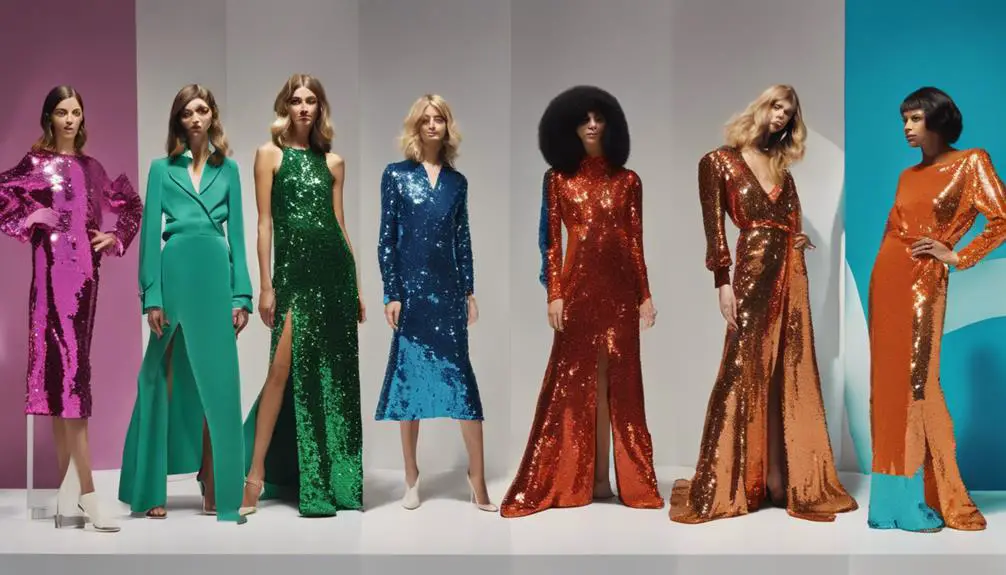
In *Fosse/Verdon*, the fashion evolution is vividly captured through the characters' wardrobes, illustrating a dynamic change from dresses to pants that mirrors the cultural transformations of the 1970s. Costume designer Melissa Toth really nails it, showcasing how fashion trends changed alongside the women's liberation movement. You can see this alteration reflected in the outfits, with Gwen Verdon rocking bold colors and patterns, while Bob Fosse's style is all about body-conscious, understated elegance.
It's not just about looking good; the costumes reveal so much about the characters' personalities. When you watch, you can almost feel the excitement of the era. Each piece feels carefully chosen, with about one-third of the costumes custom-designed to fit the vibe of the time. Isn't that cool?
As the series progresses, you notice how the change from dresses to pants symbolizes a broader cultural shift. Women were stepping into new roles—demanding freedom and expressing themselves in ways that were once unheard of. The wardrobe reflects this journey, making it clear that fashion is more than just fabric; it's a statement.
Impact of Costumes on Storytelling
While you watch *Fosse/Verdon*, the costumes do more than just adorn the characters—they actively shape the storytelling. The brilliant costume design team, led by Melissa Toth, meticulously recreated outfits that perfectly reflect the fashion of the 1960s and 70s. This attention to detail enhances the authenticity of Gwen Verdon and Bob Fosse's journeys, making you feel like you're right there with them.
Each outfit shows their personal struggles and triumphs. For instance, when Gwen slips into her iconic green hostess jumpsuit, it's not just about looking fabulous; it's about her artistic spirit and emotional state at that moment. These vibrant costumes illustrate the cultural shifts of the time, connecting their experiences to larger societal changes, especially around women's liberation. You can't help but see how their wardrobe tells a story all on its own!
Frequently Asked Questions
What Apparel Was Fosse Known for Putting Dancers in His Choreography?
Fosse's choreography showcases dancer costumes that highlight movement with a theatrical style. You'll see iconic fashion like high-waisted pants, sexy leotards, and striking accessories, creating a visually stunning performance that captivates audiences.
Did Fosse and Verdon Divorce?
Yes, Fosse and Verdon divorced, showcasing complex marriage dynamics. Their creative partnership thrived despite personal struggles, leaving a lasting influence legacy. Ironically, their separation didn't hinder their artistic collaboration; it perhaps fueled their genius further.
Did Bob Fosse and Gwen Verdon Have a Child?
Yes, Bob Fosse and Gwen Verdon had a daughter, Nicole. Their Fosse family dynamics reflect Verdon's artistic influence, while Nicole carries on the legacy, embodying her parents' production style and creative spirit in her work.
Where Was Fosse Verdon Filmed?
Fosse/Verdon was filmed across various locations in New York City. The production crew meticulously crafted set designs, capturing the vibrant atmosphere. Behind the scenes, they guaranteed authenticity in every detail, enhancing the viewer's experience.

